
By Ed Fleming
14/12/2021
With the cost of living on the rise, our disposable income is already stretched to cover our needs and wants. But how does this compare to previous generations? It’s hard to believe that in 1977 a family home cost around £11K on average, a cinema ticket 83p, and a litre of fuel 38p.
Savoo has delved into historical data to find out how disposable income has evolved over the decades compared with the cost of living and inflation rates to show if we really are better or worse off.
Brit’s would be £25,397 better off each year if salaries increased at the same levels as inflation since 1987
Disposable income is the amount of money we have left to spend or save after income taxes are deducted. The rate of disposable income depends on several factors, including your tax bracket, inflation levels, and the cost of living.
Between 1987 and 2020 the mean disposable income has increased by 64% from £19,221 to £31,464 on average per year. But how much have our salaries increased by and is it in line with inflation rates?
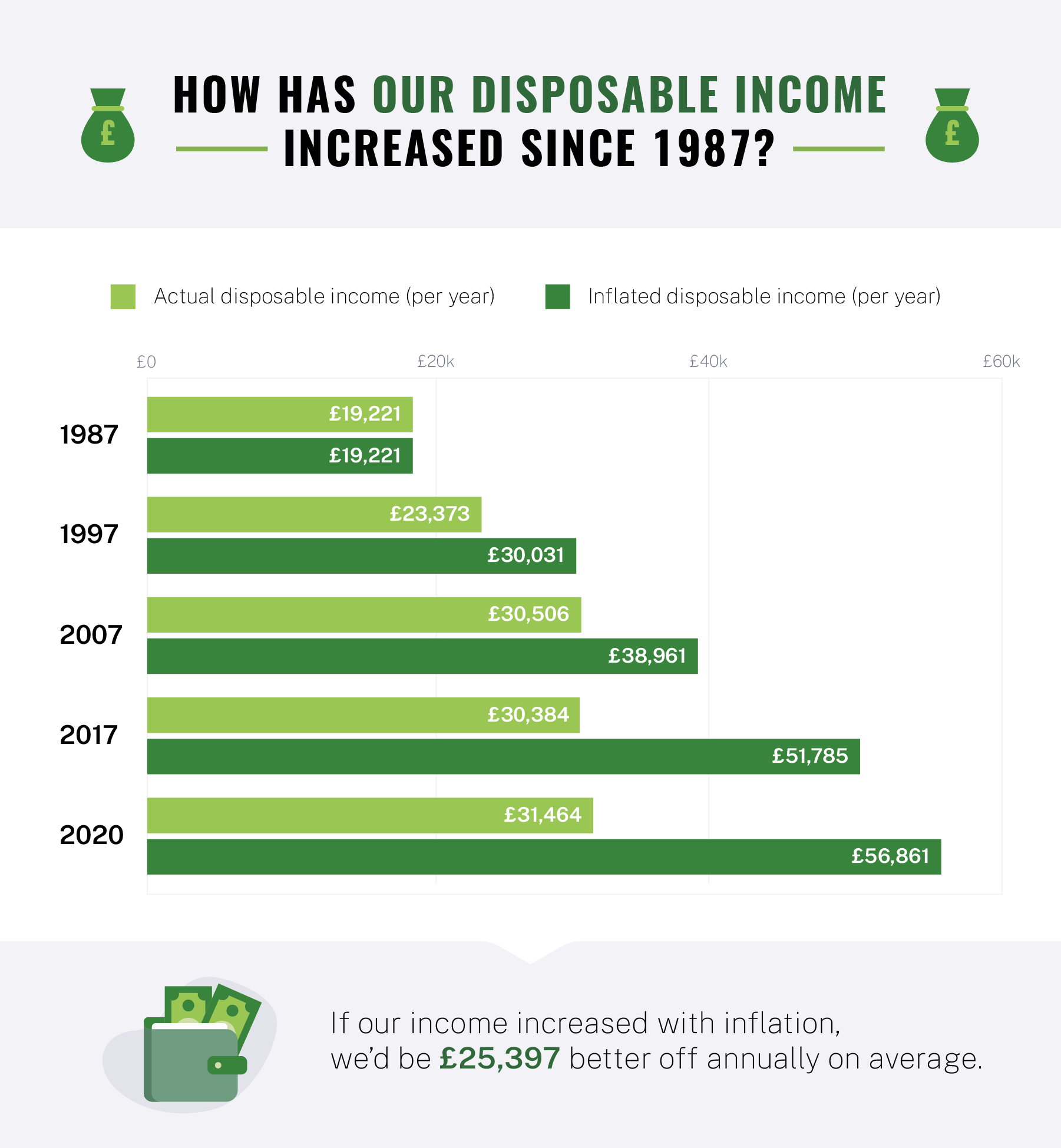
If salaries were in line with inflation over the last three decades, the mean disposable income would be a staggering 81% more at £56,861 on average. That means, we’re £25,397 less better off each year when we compare against inflation and the cost of living.
How does the cost of living and life’s necessities compare to the level of inflation since 1987?
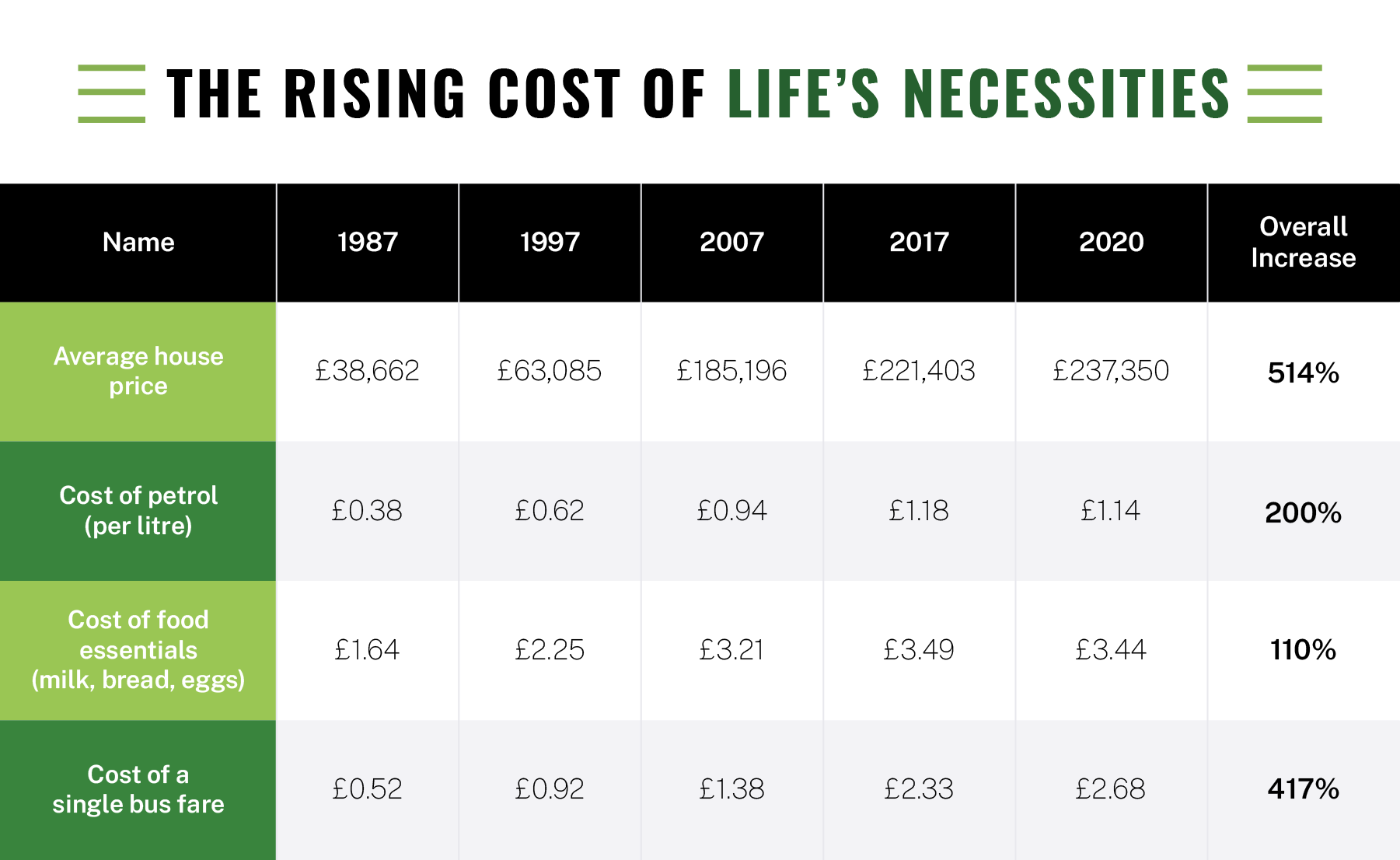
Looking at current levels of disposable income, against current prices of essential items (including housing, travel and food) we can see the rate at which our income is increasing does not match the rate of the increasing cost of living.
The cost of housing has increased 514% over three decades, despite far lower increases in our disposable income
Back in 1987, house prices were just £38,662 on average making it easier for first-time buyers to get on the property ladder. House prices are now around six times more at £237,350 on average, which is a huge 514% increase.
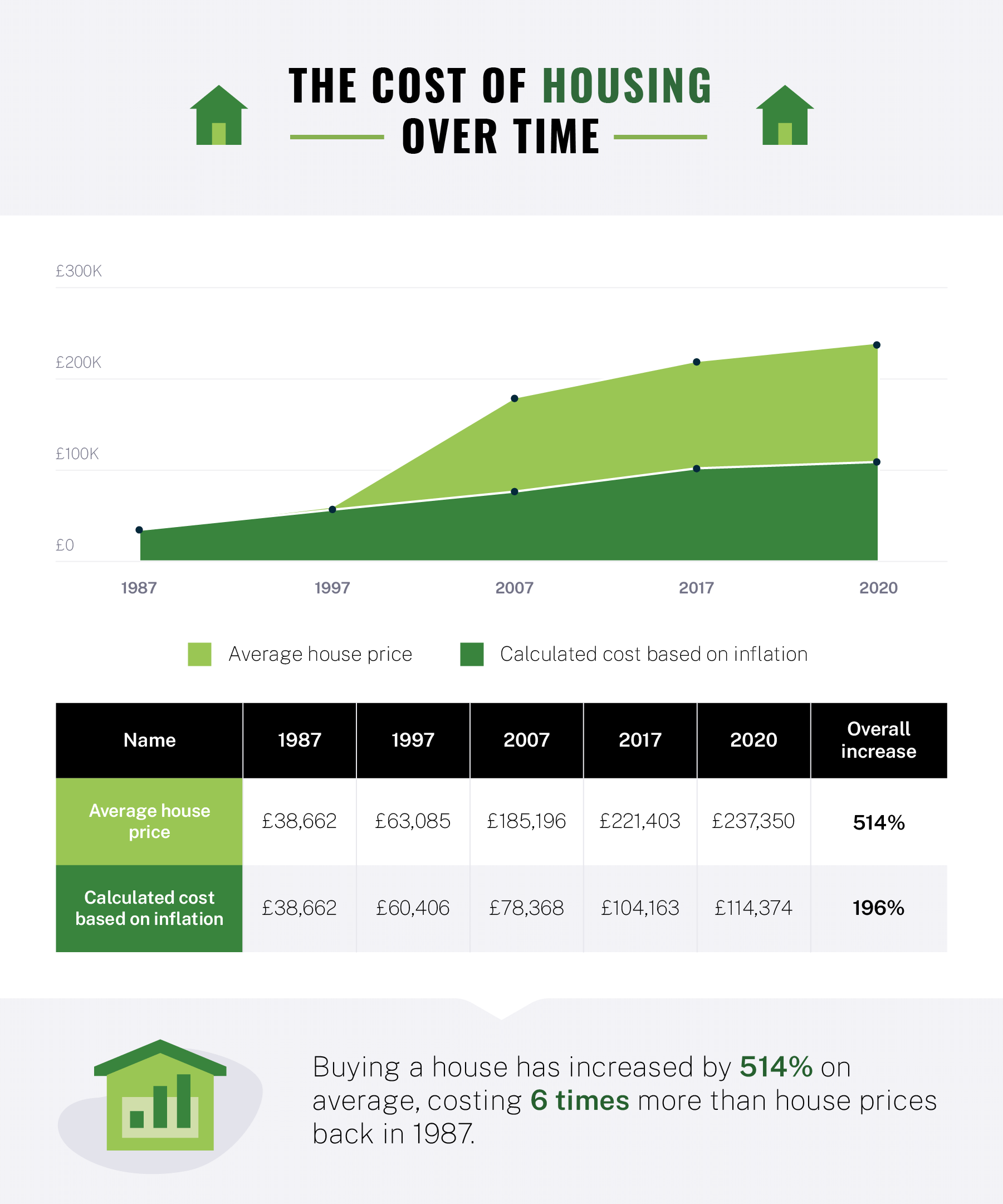
To put that into perspective, house prices are now six times (514%) more expensive, whilst disposable income has only increased by 64% on average, with a total change of £12,243. Based on inflation, the average house price would be £114,374, which would make it far easier for individuals today to get on the property ladder.
Fuel prices are at an all-time high (+200%) since 1987
In October 2021, the average price of unleaded petrol reached a record high of £1.44 per litre amid oil market pressure. The new high is 30p more than a year ago, 64p more than two decades ago, and £1.06 more than in 1987.
To fill the average-sized fuel tank now will cost a huge £64.80 on average, compared to £15.20 in the eighties.

Based on inflation, the price of petrol should sit just under its 2020 price (£1.14) at £1.12 per litre, making it one of the smallest differences between the cost of living now vs the cost it should be based on inflation rates.
The price of a single bus trip has increased 417% over the last 30 years, meaning Brit’s are spending £1.15 more for every journey based on inflation rates
For most of the country, the price of a single fare bus ticket is £2.68 on average. That’s 417% more than it cost in 1987 when a single bus trip would cost just 52p on average.
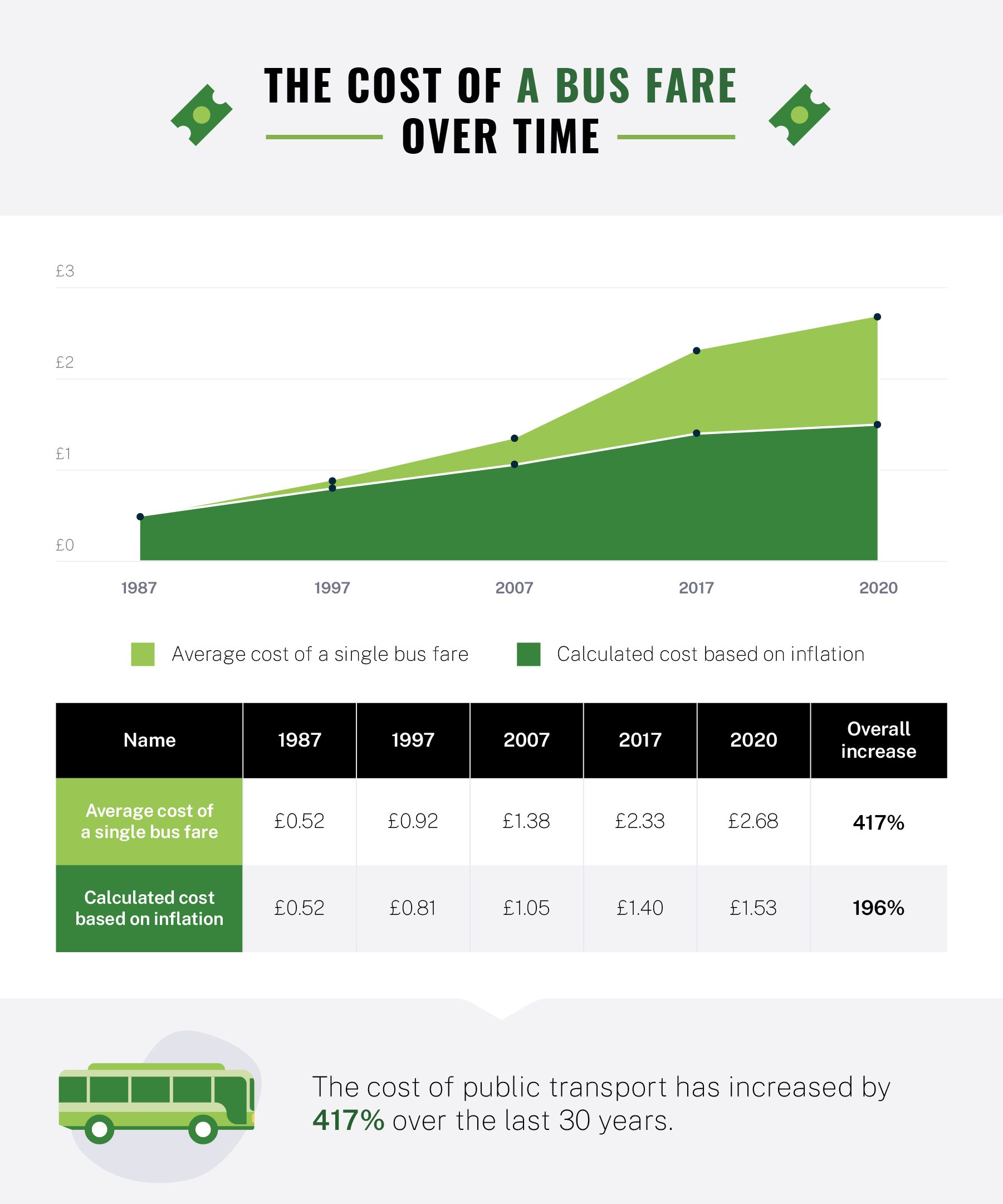
If we compare with inflation, the price of a single bus trip should cost £1.53, meaning we could be spending over £1 for every journey we take! If we use the bus to get to work, that’s £10 per week and over £520 more a year based on what we should be paying.
Life’s pleasures in the 20th century have overtaken inflation rates, whilst our disposable income has remained disappointingly stagnant
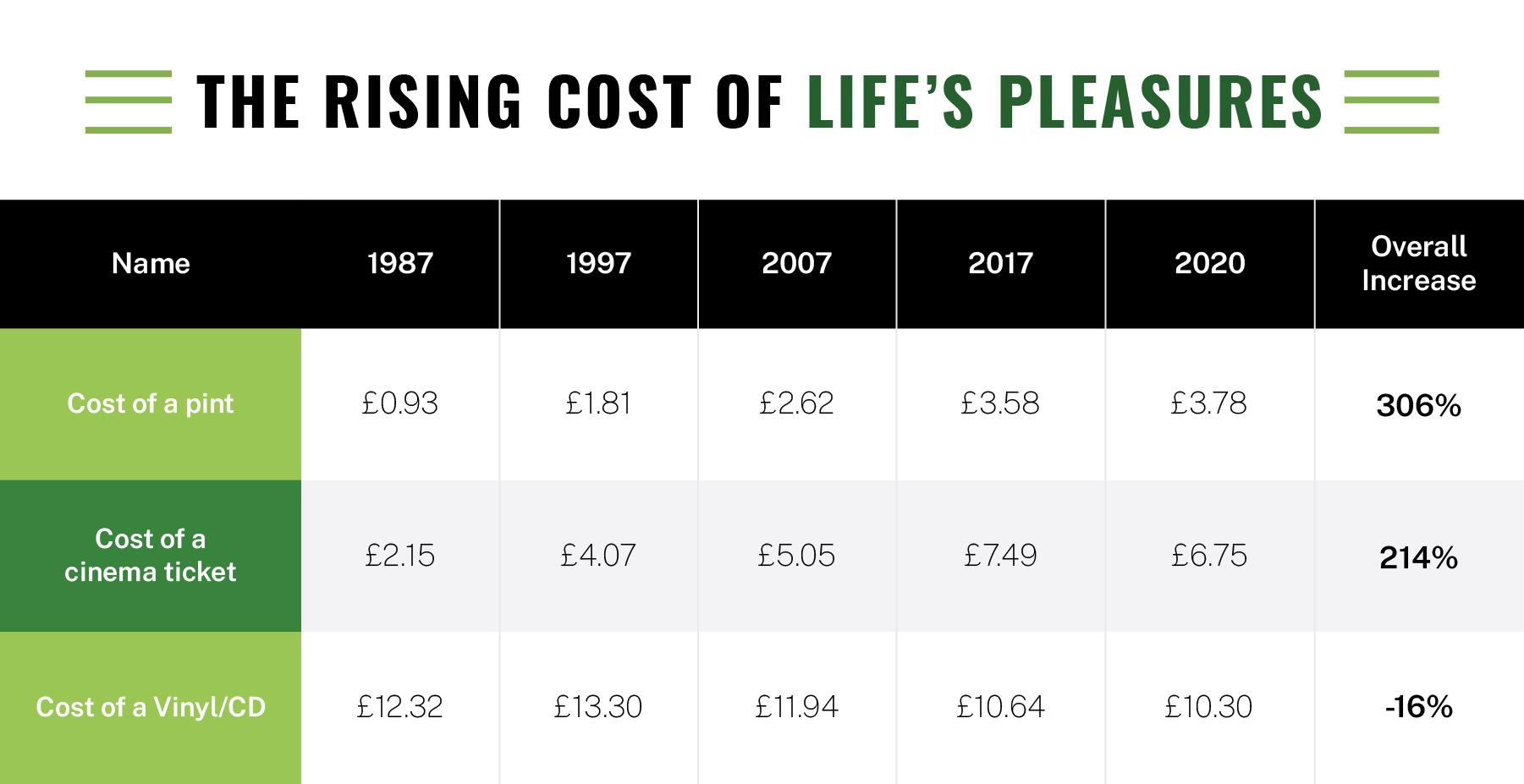
The price of a standard cinema ticket is up 214% since 1987
To get our movie fix in the 80s, we’d have to go to the local cinema. Back then, a single cinema ticket cost just £2.15, up from 83p 10 years prior.
In today’s streaming era, the cost of a cinema ticket starts at £6.75 on average, which is 214% more than 30 years ago.
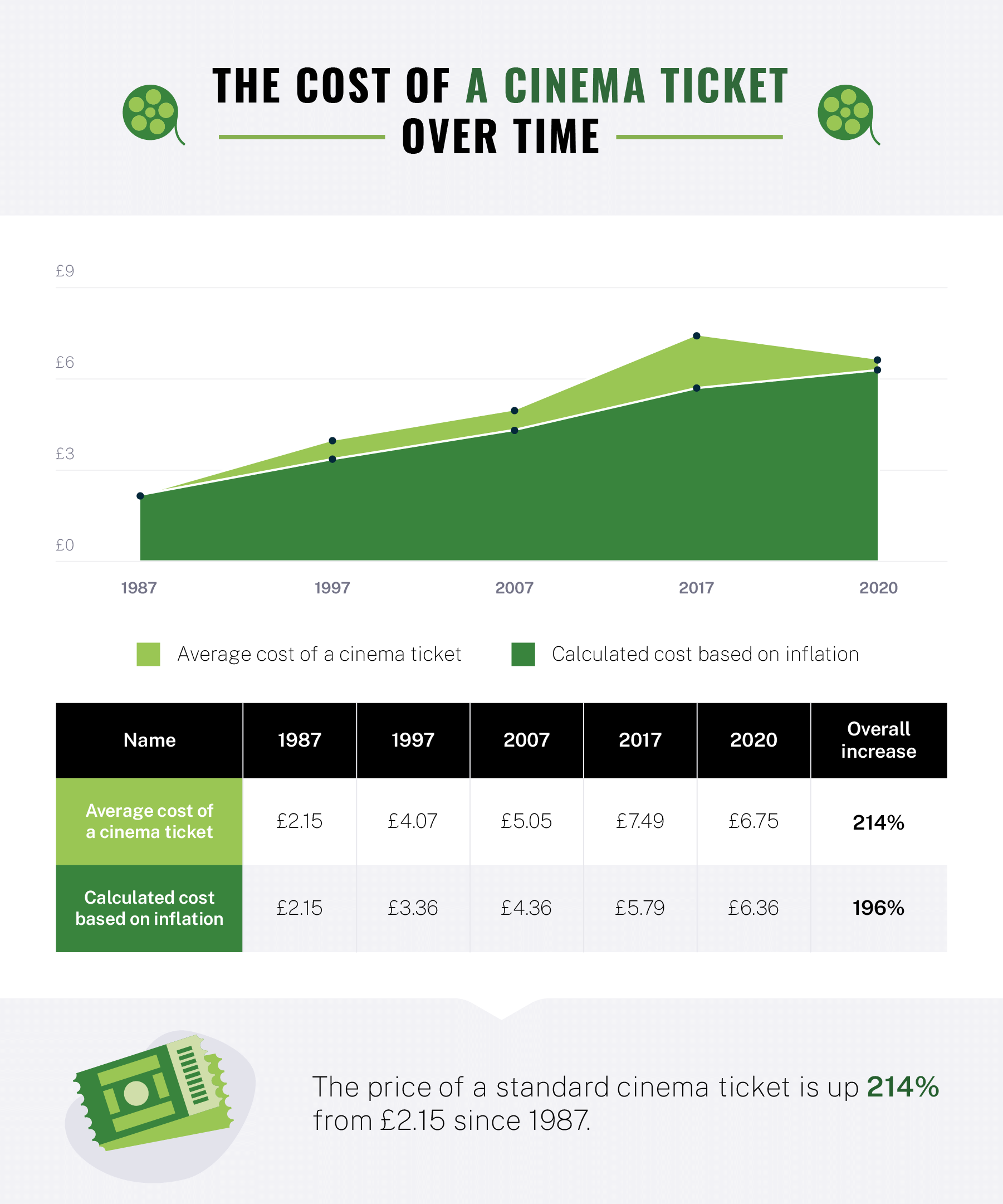
Based on inflation, the cost of a cinema ticket would be around £6.36 which is just a 39p difference compared to current prices.
Brit’s could be spending £1.03 for every pint of beer if prices since 1987 were in line with inflation rates
To enjoy a pint in 1987 would have cost as little as 93p, which is 306% less than today’s price of £3.78 on average. But how big really is the difference between the average cost of a beer and how much it should be against inflation rates?
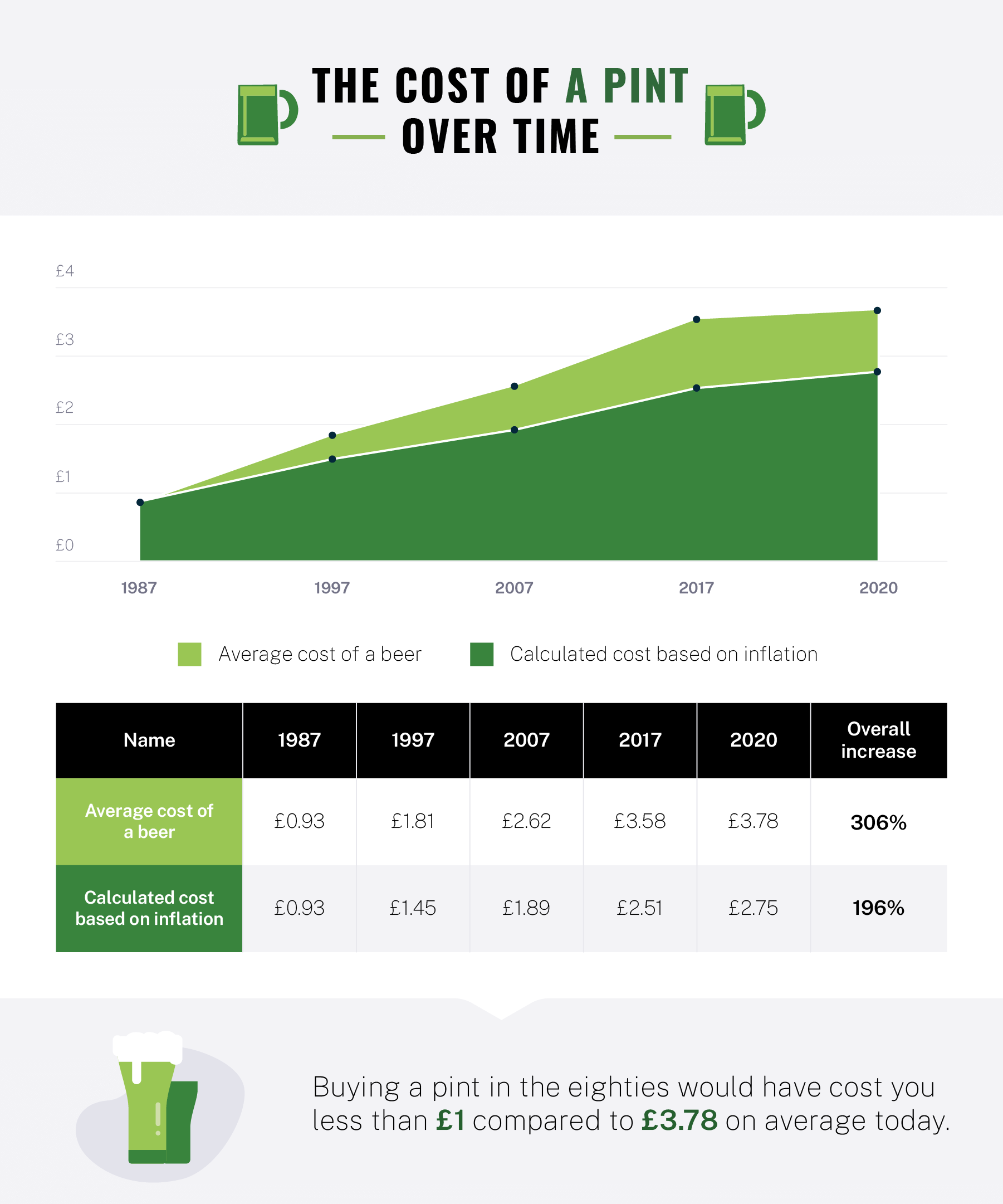
If we base the increase on inflation, to buy yourself a beer should cost 37% less at £2.75 a pint on average. With every pint costing £1.03 more than it should do based on inflation, you could be racking up an impressive pot of money over a number of years.
Vinyl and CDs are 18% more affordable compared to 35 years ago, the only item where we are better off than against inflation rates
In 1987, it would have cost you £12.32 to listen to your favourite album and prices peaked in 2004 when it would cost £13.45 on average.
Today, given streaming is the most popular way to listen to music, the price of physical copies are 16% cheaper at £10.30 on average.

If we look at inflation, the price of a vinyl record would be £36.45 on average which is 261% less than the current average price, so now is the perfect opportunity to expand your collection.
Looking at the findings, it’s clear that disposable income has increased at a slower rate over the last three decades compared to the cost of living, which means we’re paying out more for everyday necessities and life’s pleasures.
At Savoo we're here to help save you money on your online shopping. So, during the cost of living crisis you know you can turn to us to help keep your costs down. We've put together our Cost of Living Crisis guide to help you save money. Plus, check out our Top Vouchers page, as well as these top retailers:
Get discounts at these popular retailers with our voucher codes and promo codes
- Pets at Home
- MuscleFood
- early learning centre
- Disney Store
- Argos
- John Lewis
- Debenhams
- TUI
- Marks & Spencer
- SHEIN
- Buyagift
- Zavvi
- First Choice
- The Hut
- Dorothy Perkins
- New Look
- Karen Millen
- Footasylum
- Clarks
- H Samuel
- Ernest Jones
- Tesco
- Sainsbury's
- Interflora
- Hotel Chocolat
- Boots
- Holland and Barrett
- LOOKFANTASTIC
- The Body Shop
- B&Q
- Wickes
- Dunelm
- ao.com
- Currys
- Nike.com
- SPORTS DIRECT
- Halfords
- Myprotein
- Domino's
- boohoo
- Missguided
- HP
- Sky
- BT Broadband
- Travelodge
- lastminute
- Bulk
- Samsung
- Booking.com
- Boomf
- In The Style
- Pizza Hut
- Ted Baker
- Hive Home
- Omio
- Mindful Chef
- Amazon
- Amazon Prime Free Trial
- VonHaus
- Gtech
- BAM
- Home Essentials
- Alienware
- Gousto
- Moonpig
- Pandora
- Papa John's
- Toolstation
- eBay
- NordicTrack
- Bloom and Wild
- Quiz
- Asos
- Superdrug
- JD Sports
- Temu